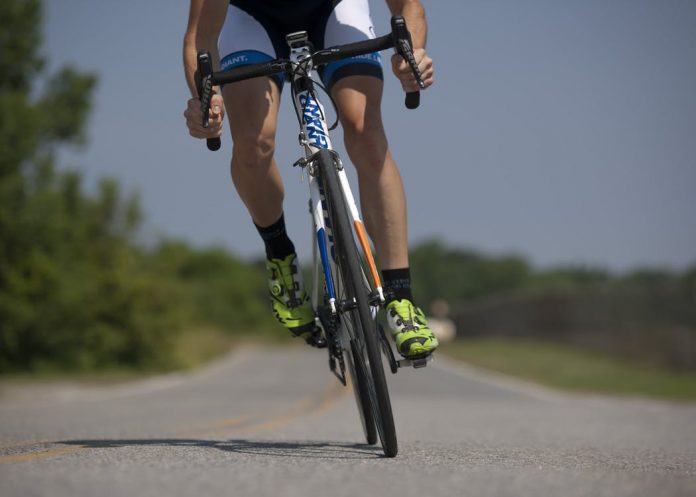Will a Speed Sensor Work on a Spin Bike?
Among the essential bits of information, spin cyclists should take note of are bike speed and crank arm RPM or revolutions per minute. This helps gauge performance whether you’re training seriously or riding for fun.
Typically, a spin bike computer is not pre-configured with an RPM tracking system. In fact, most spin bikes don’t come with a fitness monitor, to begin with. Thus, speed and cadence sensors are called upon to keep track of cycling stats.
Not all speed sensors are created equal, as evidenced by our list of some of the highly recommended indoor bike speed sensors on the market.
Best Spin Bike RPM and Speed Sensors
Tracking progress helps cyclists make better progress. Here are our top five picks for the best speed and cadence for spin bikes.
Garmin Spin Bike Cadence Sensor
One of Garmin’s top indoor bike speed sensors also happens to be one of the best on the market. This model can be fastened to crank arms of all sizes and doesn’t require a head unit.
The accessory keeps you aware of the RPM while riding by measuring each stroke of the pedal. All you need to do is attach the sensor to the crank arm. It can track progress accurately, which should boost the quality of your training sessions.
Easy installation is another one of this sensor’s perks. Cyclists are usually on-the-go and don’t have time for complicated assembly or installation. This Garmin number requires none of that, with its no-fuss installation and easy switching from outdoor to indoor bikes.
The ANT+ and Bluetooth low-energy technology is another feature that may capture your interest. Using Garmin Connect and other applications, you can leverage this pre-configuration to share your stats with interested parties and improve your training.
Garmin Bike Speed and Cadence Sensors
As it is, we don’t expect anything less from Garmin when it comes to speed and RPM sensors. Their second entry on this list is built with wireless sensors that monitor both speed and cadence. Its installation process does not require magnets, which implies easy installation.
Also known as the Speed Sensor 2, this indoor cycling sensor is fastened to the flywheel. The speed sensor feature is self-adjusting, and the Garmin device and Edge computer provide accurate speed and distance measurements.
The cadence sensor is attached to the track pedal stroke and crank arm to enable progress tracking during practice. The Bluetooth low-energy tech and ANT+ are also featured in this model and let you send live training data to your team.
Indoor Cycling Cadence Sensor
This Wahoo entry is a go-to RPM sensor for many spin cyclists. It has only one sensor for measuring cadence, but it is among the most accurate of its counterparts. As another magnet-less number, this model should offer you no trouble in the installation department.
The accessory has a sleek and lightweight design, which makes it weigh no more than 7 grams. On top of the device’s long-lasting replaceable battery, this should make it easy for you to use the tool on multiple bikes.
Like most cadence sensors, this too is fastened around the crank arm. Thanks to ANT+ and Bluetooth 4.0 technology, the accessory holds excellent mobile-device compatibility, especially the iPhone.

S3+ Spinning Speed and Cadence Sensor
Magenes lands a spot on our list with this two-in-one sensor that has been dubbed as among the best stat trackers for indoor bikes by many. It has excellent dustproof and waterproof features that make cycling enjoyable in all kinds of weather.
To put the cadence sensor to use, attach it to any crank arm so it can measure every stroke of the pedal. This enables the sensor to provide an accurate reading of your performance.
As you may have already gathered, the speed sensor is attached to the flywheel. It self-calibrates to provide an accurate speed measurement.
Moreover, Bluetooth and ANT+ pre-configurations in this accessory allow for convenient data sharing and multiple-device compatibility. Top this off with a magnet-less easy installation, and you have yourself a nearly perfect candidate for progress tracking for indoor bikes.
Coospo Spin Bike Speed and Cadence Sensor
The meter cycling in this sensor allows for efficient tracking of cadence and speed on spin bikes. You can convert it into either a speed- or cadence-measuring device, depending on the stat required. Make sure to fasten it around the crank arm as a cadence sensor and attach it to the flywheel as a speed sensor.
This Coospo wireless sensor comes with a Bluetooth 4.0 protocol that lets you connect to bike computers, mobile phones, and other applications with ease. Thus, you can share statistical tidbits with interested parties conveniently.
Speed and Cadence Sensors for Cycling Progress
Whether it’s indoor or outdoor cycling, one cannot deny how speed and cadence sensors contribute to progress. Spin bicycles or otherwise, pre-configurations don’t often include essential stat tracking. That may necessitate speed and cadence-measuring accessories for shedding light on areas of cycling performance that need improvement.








